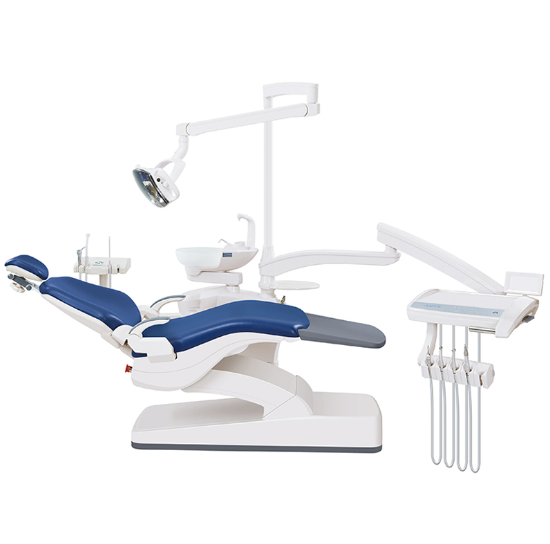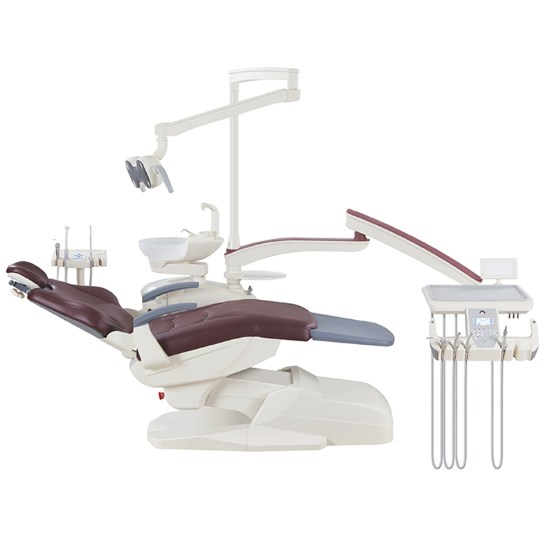Maintenance Tips for Implant Dental Units
Implant dental units are integral components of modern dental practices, revolutionizing dental care by providing stability, functionality, and aesthetics. To maximize the lifespan and performance of these units, regular maintenance and care are essential. Implementing a structured maintenance routine not only ensures longevity but also guarantees optimal functionality and patient safety. Here are comprehensive maintenance tips for implant dental units:
Regular Cleaning Protocols
Maintaining a clean environment is paramount for implant dental units. Daily cleaning routines should encompass:
●Surface Cleaning: Wipe down surfaces with non-abrasive, disinfectant wipes or solutions recommended by the manufacturer. Regularly sanitize control panels, handles, and touchpoints to prevent microbial buildup.
●Instrument Sterilization: Follow strict sterilization protocols for instruments and tools. Use autoclaves or other validated sterilization methods to eliminate pathogens and maintain a sterile environment.
●Waterline Maintenance: Periodically flush and disinfect waterlines to prevent biofilm accumulation. Utilize appropriate solutions and follow manufacturer guidelines for waterline maintenance.
●Surface Cleaning: Wipe down surfaces with non-abrasive, disinfectant wipes or solutions recommended by the manufacturer. Regularly sanitize control panels, handles, and touchpoints to prevent microbial buildup.
●Instrument Sterilization: Follow strict sterilization protocols for instruments and tools. Use autoclaves or other validated sterilization methods to eliminate pathogens and maintain a sterile environment.
●Waterline Maintenance: Periodically flush and disinfect waterlines to prevent biofilm accumulation. Utilize appropriate solutions and follow manufacturer guidelines for waterline maintenance.
Scheduled Servicing and Inspections
Regular servicing and inspections by qualified technicians or authorized personnel are crucial. Establish a maintenance schedule in compliance with manufacturer recommendations or industry standards. Key aspects of scheduled servicing include:
●Equipment Calibration: Ensure accurate calibration of equipment such as curing lights, handpieces, and imaging devices to maintain precision and efficiency during procedures.
●Component Inspection: Routinely inspect components, including hoses, connectors, and valves, for signs of wear, damage, or malfunction. Promptly replace any defective parts to avoid operational disruptions.
●Lubrication and Oiling: Follow manufacturer guidelines for lubrication and oiling of moving parts to prevent friction-induced damage and ensure smooth operation.
●Equipment Calibration: Ensure accurate calibration of equipment such as curing lights, handpieces, and imaging devices to maintain precision and efficiency during procedures.
●Component Inspection: Routinely inspect components, including hoses, connectors, and valves, for signs of wear, damage, or malfunction. Promptly replace any defective parts to avoid operational disruptions.
●Lubrication and Oiling: Follow manufacturer guidelines for lubrication and oiling of moving parts to prevent friction-induced damage and ensure smooth operation.
Staff Training and Awareness
Comprehensive staff training is fundamental for effective maintenance. Educate dental personnel on:
●Proper Usage and Handling: Train staff in the correct usage and handling of equipment to prevent accidental damage or misuse that could compromise unit functionality.
●Emergency Procedures: Provide training on emergency protocols in case of equipment malfunction or breakdown, ensuring swift and appropriate responses to mitigate risks.
●Updated Practices: Stay updated with industry advancements and best practices. Encourage continuous education to incorporate the latest maintenance techniques and technological innovations.
●Proper Usage and Handling: Train staff in the correct usage and handling of equipment to prevent accidental damage or misuse that could compromise unit functionality.
●Emergency Procedures: Provide training on emergency protocols in case of equipment malfunction or breakdown, ensuring swift and appropriate responses to mitigate risks.
●Updated Practices: Stay updated with industry advancements and best practices. Encourage continuous education to incorporate the latest maintenance techniques and technological innovations.
Documentation and Record-Keeping
Maintain detailed records of all maintenance activities, inspections, and repairs. Documentation should include:
●Maintenance Logs: Record dates of routine maintenance, servicing, and any corrective actions taken. Keep detailed logs of inspections and repairs conducted by authorized technicians.
●Manufacturer Guidelines: Keep a copy of the manufacturer’s maintenance instructions and guidelines readily accessible for reference during maintenance procedures.
●Warranty and Service Contracts: Maintain records of warranties, service contracts, and any communication with manufacturers or service providers for efficient troubleshooting and support.
●Maintenance Logs: Record dates of routine maintenance, servicing, and any corrective actions taken. Keep detailed logs of inspections and repairs conducted by authorized technicians.
●Manufacturer Guidelines: Keep a copy of the manufacturer’s maintenance instructions and guidelines readily accessible for reference during maintenance procedures.
●Warranty and Service Contracts: Maintain records of warranties, service contracts, and any communication with manufacturers or service providers for efficient troubleshooting and support.
Environmental Considerations
Environmental factors can impact the performance of implant dental units. Consider these factors:
●Temperature and Humidity Control: Ensure the dental environment maintains optimal temperature and humidity levels to prevent equipment damage due to extreme conditions.
●Storage and Handling: Store instruments and components appropriately, following guidelines to prevent damage from improper storage conditions or exposure to contaminants.
●Regular Air Quality Checks: Periodically assess air quality in the dental office to prevent contamination that may affect the performance of dental equipment.
●Temperature and Humidity Control: Ensure the dental environment maintains optimal temperature and humidity levels to prevent equipment damage due to extreme conditions.
●Storage and Handling: Store instruments and components appropriately, following guidelines to prevent damage from improper storage conditions or exposure to contaminants.
●Regular Air Quality Checks: Periodically assess air quality in the dental office to prevent contamination that may affect the performance of dental equipment.
Adherence to Regulatory Standards
Compliance with regulatory standards and guidelines is non-negotiable in dental practice. Stay updated with:
●Industry Regulations: Stay informed about regulations and guidelines set by dental associations and regulatory bodies to ensure adherence to standards for safety and quality assurance.
●Equipment Certifications: Ensure all equipment and components meet industry-specific certifications and standards to guarantee safety and performance.
●Continuing Education: Engage in ongoing education and training to remain abreast of regulatory changes and new standards implemented within the dental industry.
●Industry Regulations: Stay informed about regulations and guidelines set by dental associations and regulatory bodies to ensure adherence to standards for safety and quality assurance.
●Equipment Certifications: Ensure all equipment and components meet industry-specific certifications and standards to guarantee safety and performance.
●Continuing Education: Engage in ongoing education and training to remain abreast of regulatory changes and new standards implemented within the dental industry.
Conclusion
Finally, maintaining implant dental units is a multifaceted process that demands diligence, expertise, and commitment.
By adhering to structured maintenance protocols, continuous staff education, and compliance with regulatory standards, dental practices can prolong the lifespan of their equipment, ensure patient safety, and deliver superior dental care.
By adhering to structured maintenance protocols, continuous staff education, and compliance with regulatory standards, dental practices can prolong the lifespan of their equipment, ensure patient safety, and deliver superior dental care.



Leave a comment